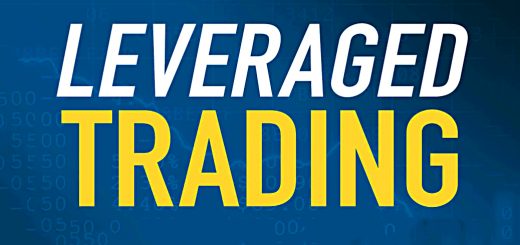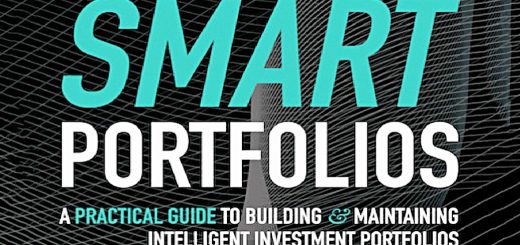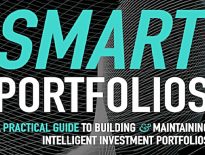Smart Portfolios 1 – The Best Portfolio

Today’s post is our first visit to a new book – Smart Portfolios by Robert Carver. What do we mean by the “best” portfolio?
Robert Carver
I recently came across Robert Carver’s website (This Blog is Systematic) from a random tweet and thought that it was very good.
- Then I found out that Rob had written two books, so I bought them.
Rob used to be a portfolio manager for the AHL hedge fund that was part of the Man group.
- He retired in 2013 and is now an independent investor (and writer).
Smart Portfolios
The book is designed to answer three questions:
- What should you invest in?
- How much should you put into each investment?
- When should you make changes (through buying or selling)?
Everything about investment involves choices trade-offs:
- risk versus return
- a small number of stocks/funds, or dozens (or even hundreds)
- costs and portfolio size are factors here
- funds are obviously more practical for smaller investors
- active monitoring and adjustment, or “set and forget”
Investment is a process carried out under uncertainty – stocks should do better than bonds in the long run, but we don’t know when or by how much.
- So we can only be sure we did the right (or the wrong) thing with hindsight.
Returns
Rob explains that investing involves second-order forecasting:
Not only do you have to predict the future, you need to predict the future better than anyone else.
That’s because prices are already discounting the collective views of other investors – everything is “in the price”.
Rob’s solution is to assume that risk-adjusted returns are the same for all assets.
- By which he means that their Sharpe ratios are not statistically different.
Which means in turn that rewards are linked directly to risk (volatility).
Rob does believe in outperformance factors:
- small firms tend to outperform larger ones
- stocks with price momentum (that have gone up over the last year) tend to do well
- cheap stocks (with eg. low PE) and high yielding stocks (lots of dividends) also tend to do well
Other factors include minimum volatility and “quality”.
- Academics call these “risk factors” – since all outperformance must be down to taking on some extra risk.
There are now lots of smart beta ETFs that attempt to exploit these factors.
The Best Portfolio
Rob defines the best portfolio as the one with:
The highest expected real after costs total geometric absolute return, for a
given level of risk and time horizon, in a particular investment currency.
So we need to take into account inflation, costs and risk, but should not care whether gains come from price growth or dividends.
- And we need to decide on the currency in which we will spend money in the future.
But we don’t need to track a benchmark or other investors (I think we need to build our own personal benchmark).
Geometric means are a better way of combining a series of numbers than arithmetic returns.
- Geometric means are the same as compound growth rates.
The geometric mean is always lower than the arithmetic mean, unless all annual returns are identical.
Since equities have the highest variance (as well as the highest returns), geometric means make portfolios with lots of stocks less attractive than more diversified alternatives.
Tax
Rob doesn’t mention taxes, but I would argue that we need to look for the best after-tax return.
The two main tax breaks in the UK (SIPPs and ISAs) allow access to almost all asset classes
- But the other two key tax breaks (principal private residence relief and VCT / EIS) are restricted to property and early-stage private equity respectively.
So you might face a trade-off between post-tax returns and pre-tax ideal asset weightings.
- For example, many people living in London will probably be over-allocated to property because of the high real-estate prices there.
Another area where tax can affect your choices is dividends.
- In some circumstances, investors can choose to receive money as dividend income or as capital gains.
The balance between capital gains and dividend allowances changes regularly, but the CGT allowance for next year is £12k, whilst the dividend allowance is now down to £2K.
And a third area where tax might be relevant is spread-betting.
- I know Rob is not a big fan because under many circumstances spread bets are expensive compared to some alternatives.
But winnings are tax-free, so there’s another trade-off to think about.
Expectations
UK stocks average 5% ps and have a 90% chance of returning between 16% and 40% in a given year.
- You can think of this as 12% pa ± 28%
This volatility, combined with our interest in real returns (after inflation) means that there is no such thing as a safe asset or “risk-free” investment.
- Assets with stable returns (cash and bonds) will also have returns close to or below the rate of inflation.
Currencies
Rob advises measuring your portfolio in the currency that you expect to do your future spending in.
- But of course, your whole portfolio won’t be in this currency.
Even after accounting for UK assets like property, DB pensions and cash, I have 35% exposure to foreign currencies.
- Which means that I have FX risk.
Like me, Rob doesn’t believe that the cost of hedging is worth it.
Currency returns are fairly random so hedging won’t systematically gain or lose anything.
Hedging also increases correlations (in the base currency) and so undermines the benefits of diversification.
Conclusions
That’s it for today.
- It’s been an enjoyable and clear introduction and I’m looking forward to reading the rest of the book.
Until next time.

















